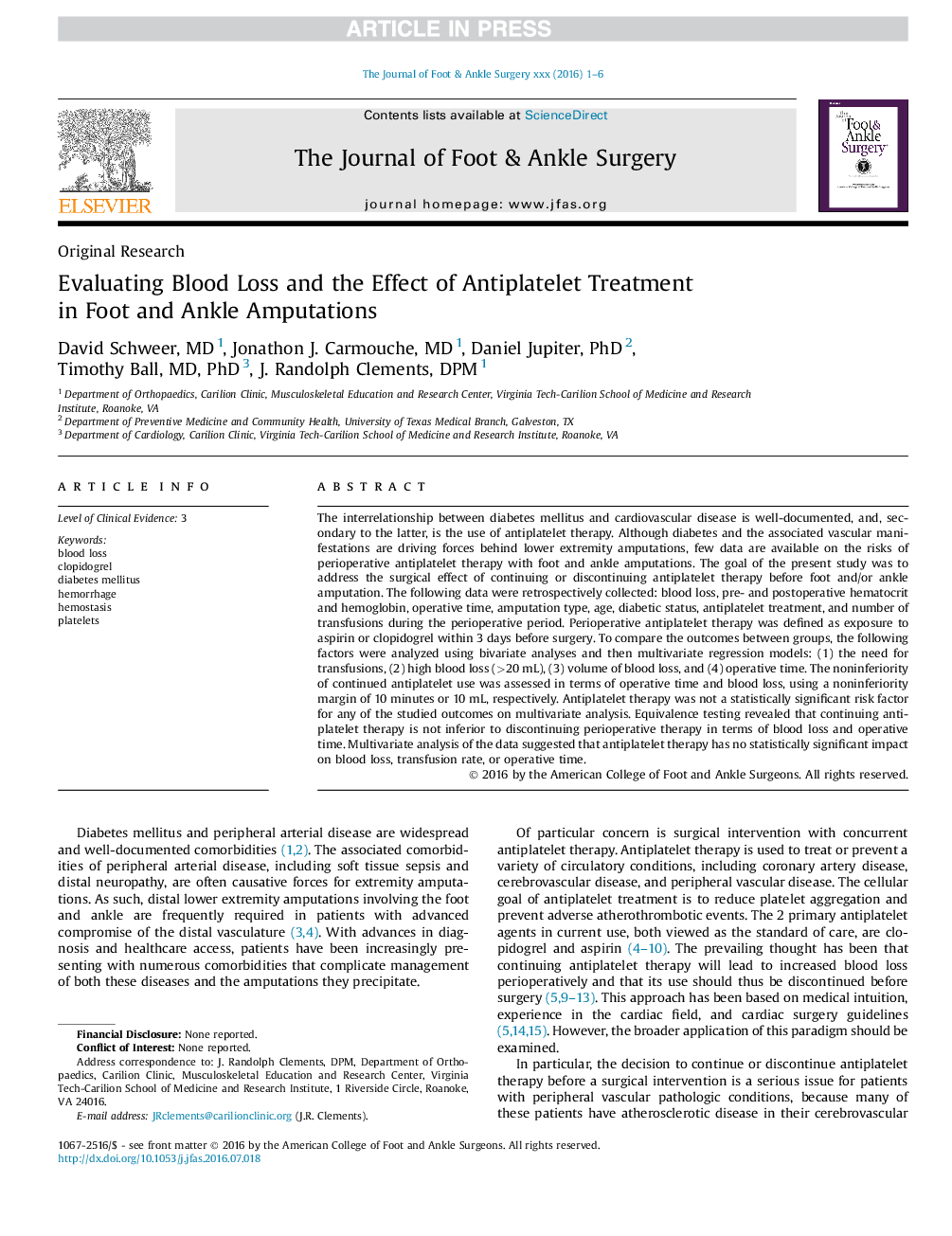| Article ID | Journal | Published Year | Pages | File Type |
|---|---|---|---|---|
| 5576136 | The Journal of Foot and Ankle Surgery | 2016 | 6 Pages |
Abstract
The interrelationship between diabetes mellitus and cardiovascular disease is well-documented, and, secondary to the latter, is the use of antiplatelet therapy. Although diabetes and the associated vascular manifestations are driving forces behind lower extremity amputations, few data are available on the risks of perioperative antiplatelet therapy with foot and ankle amputations. The goal of the present study was to address the surgical effect of continuing or discontinuing antiplatelet therapy before foot and/or ankle amputation. The following data were retrospectively collected: blood loss, pre- and postoperative hematocrit and hemoglobin, operative time, amputation type, age, diabetic status, antiplatelet treatment, and number of transfusions during the perioperative period. Perioperative antiplatelet therapy was defined as exposure to aspirin or clopidogrel within 3Â days before surgery. To compare the outcomes between groups, the following factors were analyzed using bivariate analyses and then multivariate regression models: (1) the need for transfusions, (2) high blood loss (>20Â mL), (3) volume of blood loss, and (4) operative time. The noninferiority of continued antiplatelet use was assessed in terms of operative time and blood loss, using a noninferiority margin of 10Â minutes or 10Â mL, respectively. Antiplatelet therapy was not a statistically significant risk factor for any of the studied outcomes on multivariate analysis. Equivalence testing revealed that continuing antiplatelet therapy is not inferior to discontinuing perioperative therapy in terms of blood loss and operative time. Multivariate analysis of the data suggested that antiplatelet therapy has no statistically significant impact on blood loss, transfusion rate, or operative time.
Related Topics
Health Sciences
Medicine and Dentistry
Orthopedics, Sports Medicine and Rehabilitation
Authors
David MD, Jonathon J. MD, Daniel PhD, Timothy MD, PhD, J. Randolph DPM,
